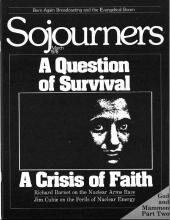There is a decided continuity between the teaching of Jesus and the teaching and practice of the apostolic period. For example, the book of Acts continues many the themes found in Luke's gospel, for it demonstrates how the power of the Spirit enables the Christian community to practice what Jesus taught land lived. Two passages act as summaries to explain how the church does in fact function: Acts 2:43-47 and 4:32-5:11.
Both of these passages exemplify a lifestyle characterized by three dynamic forces. The first is a total, single-minded commitment to God demonstrated in the prayers, frequent gatherings, and continuing conversions of "those believing." There was a base of commitment from which to see all of life in new perspective. The second force is the experience of the presence of God among them in the dynamic of the Holy Spirit. It is no accident that the first summary passage is set into the Pentecost narrative and the second follows immediately after the powerful "filling" with the Spirit in Acts 4:31. This lifestyle is not a law imposed from without, but a new direction and power flowing from within.
The third force is a deep concern for one another, which is expressed in the sharing of goods and meals.
When we look at the material more closely, we see that the people expressed their concern for one another by divesting themselves of surplus goods and capital and using the proceeds for the good of the community. This is expressed in chapter two in the phrase "they had all things in common" (2:44). A further explanation shows that this practice of divesting met all community needs (2:45). In chapter four this same concept is indicated by the words, "No one called the things which belonged to him his own" (4:32). The unity of the community meant that private possession was subjectively renounced, but the objective redistribution of the goods took place according to the needs developing in the community.
Read the Full Article

